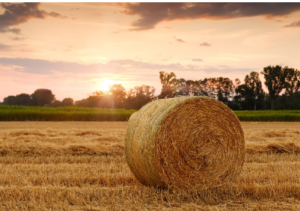Twine is the lifeblood of baling operations. This versatile, natural or polypropylene wonder can mend fences and reattach tractor parts, but it’s mostly used for baling.
Choosing the best baler twine for round bales requires careful consideration of several variables. This article will highlight some tips for buying baler twine for round bales.
Size
Getting ready for hay season can be hectic, but you can help yourself save time and money by planning. Determine how many bales you want to create and the corresponding twine needs. It will help you plan your budget and purchase the right baler twine for round bales. A quick twine calculator can provide you with a good estimate of the amount of twine needed.
A 9,000-foot roll of poly twine will produce approximately 1,000 bales of hay. It is an ideal size of twine for most large round balers. This twine has a 110-pound tensile strength and is treated to resist rodents and mildew. It is also UV-treated to withstand weather exposures over the long term.
Poly twine is made from a plastic polymer, which means it will not biodegrade as quickly as sisal twine. However, it is an excellent choice for round balers as it can be used in a wider range of conditions. The twine is also easy to handle and has a high tensile strength.
 Some farmers use a clever feed management strategy by leaving a small number of natural fibre mini-round bales in the field after they are bound. These small bales are easily accessible by livestock and provide the animals with a nutritious food source for the winter. It reduces feed waste, improves spring regrowth in the field, and prevents soil compaction.
Some farmers use a clever feed management strategy by leaving a small number of natural fibre mini-round bales in the field after they are bound. These small bales are easily accessible by livestock and provide the animals with a nutritious food source for the winter. It reduces feed waste, improves spring regrowth in the field, and prevents soil compaction.
Strength
Twine is a multi-purpose product used to mend fences, reattach tractor parts and much more. It is a tool that many farmers and ranchers rely on heavily. For hay farmers, it is an integral part of the baling process that can affect the quality of the bales produced.
When choosing a baler twine for round bales, it is important to check the tensile or breaking strength of the twine. This number will tell you if the twine is strong enough to hold the weight of a bale and stand up to transporting, hauling and storage.
In addition to tensile or breaking strength, it is also important to consider the twist of the twine and the number of fibres it has. The fibres of the twine should be uniform and have a consistent twist. It will ensure the twine runs smoothly through the baler and reduces machine wear.
Knots
A good baler twine is made from high-quality, long-lasting natural fibres. It is treated to resist rodents, rot and mildew. It is also biodegradable and safe for the environment. It is also uniform for consistent baling.
This twine is available in a range of sizes to accommodate all types of balers. It is available in both synthetic and natural sisal. It can also be used to tie up loose bales and other applications, such as retaining crops in field storage. It can also be used as a temporary fence to protect livestock.
Choosing the right baler twine for round bales is essential for a successful round bale. It should be able to withstand high winds and heavy rainfall without breaking or becoming damaged. It should also be strong enough to hold the bale together and keep it in place while it’s transporting from the field to the barn or feedlot.
A good twine is a durable, reusable and affordable way to hold round bales together and prevent them from falling over. It can also be used as a fence for livestock, and it can help to organize and store cattle feed and hay. It is easy to use and can be purchased in a variety of colours. If you want to buy a new twine, check its tensile strength, knots and length to make sure it’s suitable for your baler.